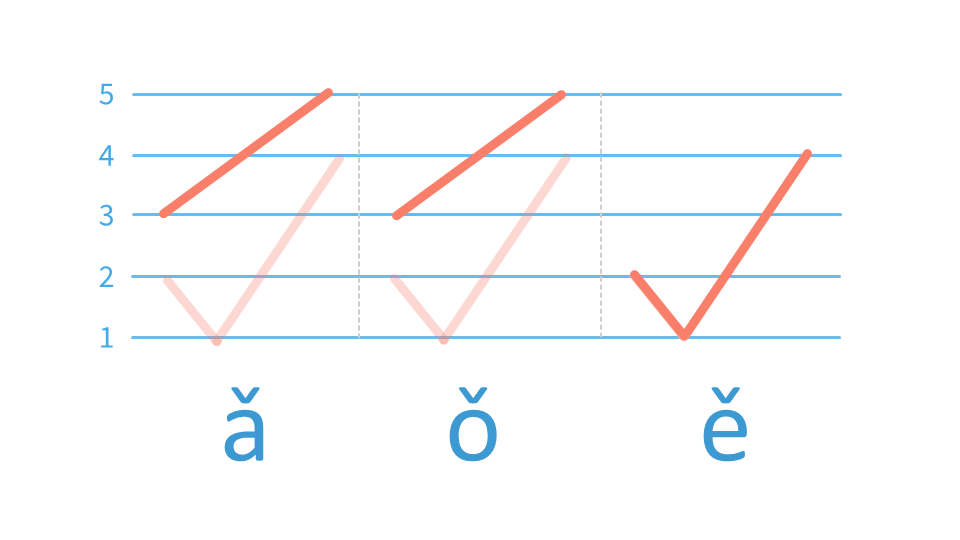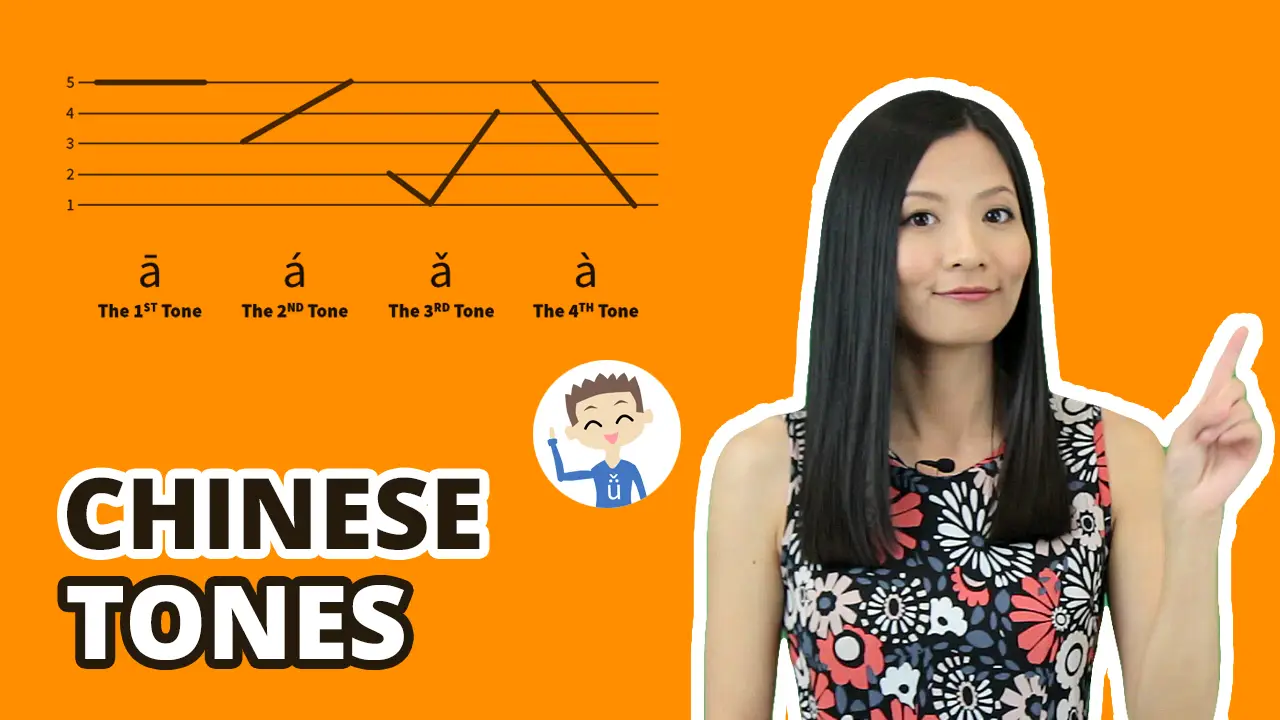Tone Lesson 7 – The Third Tone – Three Third Tones in a Row
THE THIRD TONE: PRONUNCIATION 2 - MANDARIN THREE THIRD TONES IN A ROW
There are three ways to pronounce the Chinese Third Tone:
- Original Full Third Tone Lesson 5
- Third Tone becomes Second Tone Lesson 6 Lesson 7
- Half Third Tone Lesson 8 Lesson 9
We already know that when there are two Third Tones in a row, the first one changes into the Second Tone. This type of Tone change is called Chinese Tone Sandhi. What if there are three Third Tones in a row? To decide its pronunciation, we need to know the meaning and structure of the phrase. But if you are a beginner, you can also practice with the video to get used to the Chinese Tone change rules
Chinese Tone Sandhi: Mandarin Three Third Tones in A Row
Chinese Tone Sandhi refers to the situation where the Tone of a syllable gets changed or modified because of its neighboring syllables. So in Chinese Tone Sandhi are basically the commonly shared Chinese Tone change rules. However, the Tone only changes when speaking, we will still write it as the original Tone.
Mandarin Three Third Tones in a row is one of the many Chinese Tone change rules, and probably deserves the most attention. It is crucial if you want to sound native.
How to Pronounce "Mandarin Three Tones in A Row"
Two Chinese Tone Change Rules
There are only two ways to pronounce Mandarin Three Tones in A Row. The two pictures below display the two Chinese Tone change rules:


Three Types of Three Third Tones Structure
There are three different ways for three Third-Tone syllables to be put together, as shown in the chart below. We need some vocabulary and grammar skills to analyze the structure and decide the Chinese Tone change rules here. But nothing too advanced.
| I | II | III |
|---|---|---|
| A B C | (A B) + C | A + (B C) |
| jiǔ jiǔ jiǔ | yǎn jiǎng gǎo | xiǎo lǎo hǔ |
| 九九九 | 演讲稿 | 小老虎 |
| nine nine nine | speech paper | little tiger |
| jiú jiú jiǔ | yán jiáng gǎo | xiǎo láo hǔ |
In Situation I, three number "nine" are equally put together, the first two syllables both change into the Second Tone.
In Situation II, (syllable A + B) is a word, and it modifies syllable C. Both (syllable A + B) change into the Second Tone.
In Situation III, syllable A is a word, and it modifies (syllable B + C). Only syllable B changes into the Second Tone. Also, syllable A in this situation is actually pronounced in the Half Third Tone, which we'll discuss in the next lesson.
Mandarin Three Third Tones in A Row – ChineseTone Sandhi Drills
SITUATION I
| A + B + C | |||
|---|---|---|---|
| PINYIN | CHINESE | ENGLISH | CHINESE TONE SANDHI |
| shuǐ huǒ tǔ | 水火土 | water, fire, earth | shuí huó tǔ |
| jiǎ yǐ bǐng | 甲乙丙 | A,B,C; 1,2,3; I, II, III | jiá yí bǐng |
| mǎ gǒu hǔ | 马狗虎 | horse, dog, tiger | má góu hǔ |
| wěn zhǔn hěn | 稳准狠 | steady, accurate, firm | wén zhún hěn |
SITUATION II
| (A B) + C | |||
|---|---|---|---|
| PINYIN | CHINESE | ENGLISH | CHINESE TONE SANDHI |
| guǎn lǐ zǔ | 管理组 | management team | guán lí zǔ |
| zhǎn lǎn guǎn | 展览馆 | exhibition hall | zhán lán guǎn |
| yǒng yuǎn hǎo | 永远好 | always good | yóng yuán hǎo |
| shǒu xiě tǐ | 手写体 | handwriting form | shóu xié tǐ |
SITUATION III
| A + (B C) | |||
|---|---|---|---|
| PINYIN | CHINESE | ENGLISH | CHINESE TONE SANDHI |
| hěn yǒng gǎn | 很勇敢 | very brave | hěn yóng gǎn |
| mǐ lǎo shǔ | 米老鼠 | Mickey Mouse | mǐ láo shǔ |
| mǎi shǒu biǎo | 买手表 | to buy watch | mǎi shóu biǎo |
| hǎo yǐng xiǎng | 好影响 | good influence | hǎo yíng xiǎng |
18 Comments
Leave a Reply
You must be logged in to post a comment.

Hello,
1. What should one do if their vocal range is not that good and thus, fully pronouncing a tone is hard?
2. How should one deal with the difficulty to say all the tones in a sentence correctly when talking at a normal pace. All the tones tend to get more like a neutral tone, when speaking at a normal pace, as saying the tone correctly requires some time. It is therefore also hard to differentiate between tones when spoken at a normal pace.
Hi! Don’t worry, this is normal.
1. You don’t need a big vocal range for tones. Keep them inside your comfortable speaking range. Tones are about the direction/shape (steady, rising, low, falling), not how “high” you can go.
2. At normal speed, tones do get compressed, especially third tone (it’s often just low in sentences, not a full dip) Just takes some practice and it doesn’t have to be perfect, 3 3rd tones together are pretty tricky!
Thanks Chuck for the wonderful explanation.
I find the A+(B+C) confusing because to me, I cannot hear that A is pronounced with a 3rd tone. it seems that its like the rest.
I have the same problem as well!
老板打游戏 ???
Hello, I find your pronunciation of A + (B C) pretty confusing.
You say that it should 3rd tone + (2nd tone 3rd tone), but your pronunciation of A never sounds like 3rd tone like it does with C. Why is this?
I’m glad and impressed that you noticed the difference between A and C. In this lesson we focused on 3rd Tone changing into 2nd Tone. Here A is actually pronounced in the Half 3rd Tone. The Half 3rd Tone will be explained in details in the next two lessons.
I thought this too… the first syllable in that example didn’t even sound like the third tone.
Then I kept reading the notes and notice that the first syllable actually turns into the “Half 3rd Tone”, which will be discussed in the next lessons.
Hi Lili, do you think it makes sense to start memorizing the words that come up in the tone lessons at this stage, or would it just cause too much confusion? 🙂 I have a feeling that it would be better for me to start with some basic vocabulary and then proceed with “paper tiger” and the like.. 🙂
By the way, really enjoying the lessons, I find the videos and notes very comprehensive and helpful.
Thanks a lot!
Sofia
Hi Sofia,
For beginners it’s unnecessary to memorize these vocabulary.
I wish that I had found this site earlier. I purchased a text book that covered HSK Level 1. It explained the tone rules covered in lesson six (two third syllable’s in a row). However, it did not explain how to pronounce three or even four third tone syllable’s in a row (e.g. 我也想走) Listening to the recorded conversions (with Chinese speakers) did not help because I could never be sure if the speaker used second or third tone to pronounce a syllable or if I imagined it.
I also like that each video is accompanied by notes so I can watch the video, read the notes, then maybe watch the video again.
really nice tip to go through script first and then video!!
Hi! So for the three types of three 3rd tone structures, in the third structure, xiao remains a 3rd tone because it is its own word, right? If so, then in the first structure, why doesn’t the first jiu remain a third tone, since jiu is its own word too? Shouldn’t it be jiu(3rd tone)+jiu(2nd tone)+jiu(3rd tone)?
Hi Lili,
I and also many others beginners have a lot of trouble with long sequences of 3rd tones.
I got already some hints from teachers/chinese persons, you can separate some chunks according to grammatical structure and speak them separately.
You made the point that we should do the tone sandhi separate for each (description particle plus word). So i don’t need to transfer the tone Sandhi for example between Subject and Predicate?
Example for my question: 我有很多事情要做。
I appreciate further details on this topic!
Kind Regards
Jan
For the Third Tone, just remember that unless there is a pause in-between, two full third Tones are never spoken together. The rules of [(AB) + C] and [A + (BC)] applies for [Subject + Predicate] as well. The number of characters decide whether to apply [(AB) + C] or [A + (BC)]. For your example, would be “Wǒ yóu(/yǒu) hěnduō shìqing yào zuò”.
Thanks Lili for the explanation.
Where to make breaks in chinese sentences is another difficult question for me. Maybe you could explore this topic in the future.
what if there is (AB) + (CD) situation?